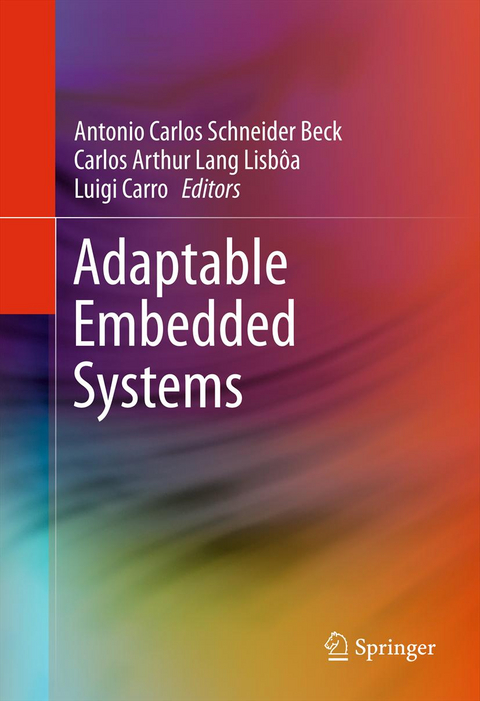
Adaptable Embedded Systems
Seiten
2012
Springer-Verlag New York Inc.
978-1-4614-1745-3 (ISBN)
Springer-Verlag New York Inc.
978-1-4614-1745-3 (ISBN)
The increasing complexity of embedded systems presents a number of challenges, for example in boosting performance while minimizing energy consumption. This volume describes several ways of using adaptability to achieve such different yet interrelated goals.
As embedded systems become more complex, designers face a number of challenges at different levels: they need to boost performance, while keeping energy consumption as low as possible, they need to reuse existent software code, and at the same time they need to take advantage of the extra logic available in the chip, represented by multiple processors working together. This book describes several strategies to achieve such different and interrelated goals, by the use of adaptability. Coverage includes reconfigurable systems, dynamic optimization techniques such as binary translation and trace reuse, new memory architectures including homogeneous and heterogeneous multiprocessor systems, communication issues and NOCs, fault tolerance against fabrication defects and soft errors, and finally, how one can combine several of these techniques together to achieve higher levels of performance and adaptability. The discussion also includes how to employ specialized software to improve this new adaptive system, and how this new kind of software must be designed and programmed.
As embedded systems become more complex, designers face a number of challenges at different levels: they need to boost performance, while keeping energy consumption as low as possible, they need to reuse existent software code, and at the same time they need to take advantage of the extra logic available in the chip, represented by multiple processors working together. This book describes several strategies to achieve such different and interrelated goals, by the use of adaptability. Coverage includes reconfigurable systems, dynamic optimization techniques such as binary translation and trace reuse, new memory architectures including homogeneous and heterogeneous multiprocessor systems, communication issues and NOCs, fault tolerance against fabrication defects and soft errors, and finally, how one can combine several of these techniques together to achieve higher levels of performance and adaptability. The discussion also includes how to employ specialized software to improve this new adaptive system, and how this new kind of software must be designed and programmed.
Adaptability: The Key for Future Embedded Systems.- Heterogeneous Behavior of Applications and Systems.- Reconfigurable Systems.- Reconfigurable Memories.- Reconfigurable Intercommunication Infrastructure - NoCs.- Dynamic Optimization Techniques.- Fault Tolerance.- Multicore Platforms: Processors, Communication, and Memories.- Adaptive Software.- Conclusions.
| Zusatzinfo | XIV, 314 p. |
|---|---|
| Verlagsort | New York, NY |
| Sprache | englisch |
| Maße | 155 x 235 mm |
| Themenwelt | Informatik ► Weitere Themen ► CAD-Programme |
| Technik ► Elektrotechnik / Energietechnik | |
| Schlagworte | design automation • Embedded Systems • Fault tolerant design • FPGA • MPSoC • Multiprocessor System on Chip • Network on Chip • NoC • Reconfigurable Architecture • reconfigurable computing • Reconfigurable embedded processors • Reconfigurable Processors • SoC • System on chip |
| ISBN-10 | 1-4614-1745-7 / 1461417457 |
| ISBN-13 | 978-1-4614-1745-3 / 9781461417453 |
| Zustand | Neuware |
| Haben Sie eine Frage zum Produkt? |
Mehr entdecken
aus dem Bereich
aus dem Bereich
Buch | Softcover (2023)
Beuth (Verlag)
99,00 €
Einführung in die Geometrische Produktspezifikation
Buch | Softcover (2023)
Europa-Lehrmittel (Verlag)
20,70 €


